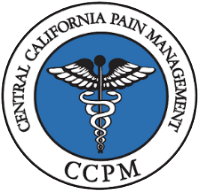Call a Pain Management Specialist Today
Westside:
(661) 587-2468
Eastside: (661) 558-1620
Migraines & Neck Pain? Learn About Cervicogenic Headaches
- By Admin
- •
- 13 Mar, 2018
This is a subtitle for your new post

If you experience both migraine headaches and neck pain, then you may think that the two symptoms are completely unrelated. However, you may be surprised to hear that multiple surveys have revealed that approximately 75 percent of migraine sufferers experience neck pain during their migraine attacks and the two symptoms are often related.
While neck pain and migraines can occur together for other reasons, when these two symptoms are experienced together, it can often be a sign that you are experiencing cervicogenic headaches. Cervicogenic headaches occur due to neck problems and treating the neck problem that triggers the headaches can help minimize headache occurrence.
Read on to learn more about why cervicogenic headaches occur, the symptoms of these headaches, and their treatment options.
Why Cervicogenic Headaches Occur
Cervicogenic headaches have numerous causes, but all are caused by problems with the neck.
These headaches can occur when the cervical vertebrae are out of alignment. There are arteries in your neck called vertebral arteries, and these arteries are responsible for delivering blood to your brain. When your cervical vertebrae are misaligned, it can interfere with the vertebral arteries' ability to deliver proper blood supply to your brain, depriving your brain of the oxygen that this blood delivers to it.
Misalignment of these vertebrae can also cause compression of nerves in your neck, leading to both neck and head pain.
Cervicogenic headaches can also occur due to other problems with the cervical vertebrae, such as osteoarthritis, a damaged cervical disc, or simple tightness in the neck and shoulder muscles. These conditions can all lead to stimulation of the nerves in your neck that travel to your head.
In addition, trauma to the neck, such as whiplash, can also cause cervicogenic headaches.
Signs of a Cervicogenic Headache
The signs that you are experiencing cervicogenic headaches and not traditional migraines can vary, but just a few include:
- Neck pain accompanies head pain.
- Pain is triggered by sudden neck movements.
- A frequent stiff neck.
- Pain that does not throb and stays isolated to one area of your head.
During your headache spells, you may also experience traditional migraine symptoms, such as nausea, aura, blurred vision, and/or sensitivity to light.
Cervicogenic Headache Treatment Options
If you suspect that you may be experiencing cervicogenic headaches, then it is important to obtain a proper diagnosis. If you have been treating cervicogenic headaches with traditional migraine medications, then having the cause of the headaches treated may be able to control your headaches much more effectively.
An X-ray, MRI, or CT scan can often detect any cervical vertebrae abnormalities that may be causing your cervicogenic headaches. Treatment of your headaches can vary depending on the cause of them.
Occipital Nerve Blocks
Occipital nerve blocks help treat cervicogenic headaches very effectively. The occipital nerves are located in the back of the head, behind the ears. To administer an occipital nerve block, a pain management specialist will inject a local anesthetic and an anti-inflammatory steroid into the area where the nerve is located.
The anesthetic temporarily numbs the nerve to reduce pain, while the long-acting steroid will relieve nerve inflammation for a much longer period of time to help keep pain from coming back.
Spinal Manipulation
Spinal manipulation can help treat some cervicogenic headaches, including those stemming from misalignment of the cervical vertebrae. This treatment can help realign the cervical vertebrae to reduce compression on the nerves causing head and neck pain.
Transcutaneous Electrical Nerve Stimulation
Transcutaneous electrical nerve stimulation (TENS) is another treatment option that can help cervicogenic headaches stemming from many neck conditions. During this non-invasive treatment, your doctor will connect a device to the nerves in your neck and/or head. The device then sends mild electrical impulses into the nerves triggering your pain. This prevents the nerves from sending pain signals to your brain.
If you experience frequent migraines accompanied by neck pain, then realize that you may be suffering from cervicogenic headaches. Contact Central California Pain Management to have your pain condition diagnosed and discuss your treatment options.
